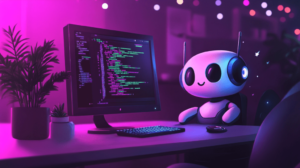
Join us in returning to NYC on June 5th to collaborate with executive leaders in exploring comprehensive methods for auditing AI models regarding bias, performance, and ethical compliance across diverse organizations. Find out how you can attend here.
In a move that underscores the close ties between two giants in the artificial intelligence industry, Nvidia CEO Jensen Huang personally delivered the first Nvidia DGX H200 to OpenAI’s office in San Francisco today.
The gesture was celebrated with a tweet from OpenAI’s president and co-founder, Greg Brockman, showcasing a photo of the event that also featured OpenAI CEO Sam Altman.
The DGX H200, Nvidia’s latest and most advanced AI processor, represents a significant leap in the field of artificial intelligence technology.
The delivery marks a pivotal moment for OpenAI, a leader in AI research, as they receive what is currently the world’s most powerful AI-specific hardware.
Unpacking the Nvidia DGX H200: A technological leap forward
Nvidia’s introduction of the DGX H200 is a significant advancement in the field of high-performance compute, with improvements that substantially enhance the performance capabilities over its predecessor, the H100.
Key upgrades include a 1.4x increase in memory bandwidth and a 1.8x increase in memory capacity, resulting in a total memory bandwidth of 4.8 terabytes per second and a memory capacity of 141GB.
These enhancements are primarily driven by the integration of HBM3e memory technology, which facilitates faster processing speeds and more efficient data handling. This is crucial for training larger and more complex AI models, particularly those used in generative AI applications that produce new content such as text, images, and predictive analytics.
Ian Buck, Nvidia’s Vice President of High-Performance Computing Products, highlighted the processor’s capabilities in a recent presentation, noting, “The DGX H200’s expanded and faster memory is designed to significantly boost performance in computationally intensive tasks, including training sophisticated generative AI models and other high-performance computing applications, while optimizing the efficiency of GPU utilization.”
Strategic implications for OpenAI and beyond
For OpenAI, the acquisition of the DGX H200 is an important strategic move that will enhance its research capabilities — particularly around its highly anticipated GPT-5 model. The improved processing power of the H200 will enable OpenAI to push the limits of what their AI models can achieve, particularly in terms of speed and complexity of data processing.
The impact of the DGX H200 extends well beyond OpenAI, however. Its introduction into the market is set to catalyze advancements across the AI industry, empowering researchers and developers to tackle more ambitious projects. This could lead to significant breakthroughs in areas such as drug discovery, climate modeling and autonomous vehicle technology.
Market dynamics and future challenges
The release of the H200 also raises questions about market dynamics, particularly concerning supply and demand. The predecessor H100 saw significant demand that led to shortages, a situation Nvidia is hoping to avoid with the H200 by collaborating with global system manufacturers and cloud service providers.
“We allocate fairly,” Huang said in a recent earnings call, responding to a question about the high demand and access to Nvidia GPUs. “We do the best we can to allocate fairly, and to avoid allocating unnecessarily.”
However, the actual availability of the H200 remains a concern. The tech industry has witnessed unprecedented demand for high-performance AI processors, and it remains to be seen whether Nvidia can meet this demand without the supply constraints experienced during the H100’s rollout.
A new era in AI research
The personal delivery of the DGX H200 by Jensen Huang to OpenAI is not just a symbolic gesture of partnership, but a testament to the critical role that cutting-edge hardware plays in advancing AI technology.
As these two industry leaders continue their collaborative efforts, the potential for innovation in AI is boundless, promising transformative changes across various sectors. The ongoing developments will no doubt be closely watched by industry experts and market analysts, as they could set new standards for what is achievable in AI research and application.




